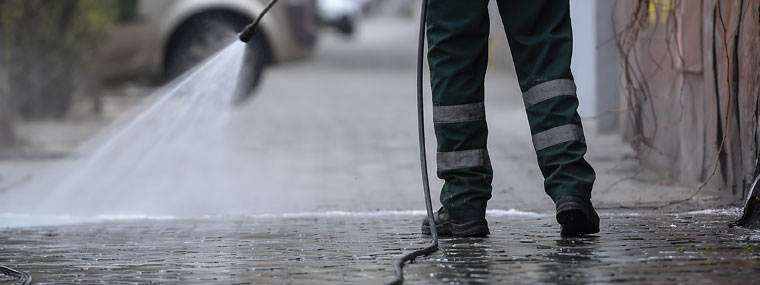
Five Reasons Your Pressure Washer Hoses Burst
by Bob Isbell – BluBird Industries, Inc. / Published March 2023

Pressure washers use high-pressure water jets to clean surfaces. The hoses that connect these machines to the faucet often fail when exposed to extreme heat, cold, or moisture. Discoloration, cracking, or hardness occurs in excessively hot or cold temperatures. High temperatures can cause the hose’s rubber to harden and crack; and as temperature increases, pressure ratings decrease. It’s important to remember that pressure washer hoses should be used at their specific temperature and pressure rating. Also, keep your pressure washer hose from freezing. Long-term freezing can damage most hoses, especially if water is in the line. Whenever possible, store your pressure washer in a warm place.
1. The Hose Is Too Old or Worn Out
If the hose has been used for a while, it will likely need replacing. You can check the age of the hose by looking at the manufacturer’s date code. If the date code is older than five years, replace the hose.
You should always inspect hoses regularly and always before use. Check for signs of wear, dents, kinks, abrasions, and holes. Minor problems become big ones under pressure. Before use, ensure that the hoses are securely and properly connected to your pressure washer. Look for cracked or worn fittings, and watch out for your surroundings. The most common cause of hose damage is being run over by a car or truck. The weight of a vehicle can destroy a hose, especially a steel-braided hose.
If a hose lacks a uniform shape, replace it. The inside of a hose is reinforced and shaped perfectly for optimal performance. If a hose loses its form, it will have trouble holding pressure. A damaged hose can cause severe injury and land you in an emergency room. High-pressure water forced through a tiny pin-sized hole is powerful enough to cut into the flesh. Taping, wrapping, or gluing a spot will not hold under pressure. Even the strongest duct tape won’t do the trick, resulting in a hose bursting and potential injury or property damage. Check for cuts and holes near the end where you connect your wand. This area is extremely dangerous because it’s close to your arm when the pressure washer is used.
2. You Didn’t Properly Tighten The Fittings
Another cause for hose failure is that the fitting needed to be tightened more when you installed the hose. Ensure the hose is fully seated into the fitting before tightening the clamp. Also, ensure the hose is tight enough as you pull the clamp. Loss of pressure can be caused by several things. Ensure your garden hose and pressure hose are not kinked, leaking, or blocked. Ensure that the water is turned on and supplying the correct amount of water (gallons per minute or GPM) outlined in your owner’s manual.
You may need to remove the water inlet filter and ensure it is debris-free. Check all the fittings as well as the trigger gun and nozzles. You may need to clean and reattach them.
3. You Used The Wrong Type of Hose
Garden hoses do not work with a pressure washer. Because garden hoses cannot withstand high pressure, you must consider the maximum pressure your hose can sustain. Most garden hoses are too weak. Even a garden hose able to withstand the pressure of up to 500 psi can’t handle a system built to produce 3,100 psi or more.
4. You Didn’t Use The Right Amount of Water
It’s easy to think you’ve used enough water when washing down a deck or driveway. However, you need to use more than just the recommended water. The more water that moves through your hose and pressure washer wand per minute, the faster you’ll be able to clean. Higher GPM cleans faster because there’s more flowing water present to remove the dirt.
5. You Didn’t Drain The System Before Using It
Draining the pressure washer system of water is essential for several reasons. You should drain the system before storage, especially if cold weather is approaching, as you don’t want excess water to freeze. If you don’t drain the system before you use it, you’ll have a lot of water left inside the hose, eventually causing the rubber to swell and burst.
The Bottom Line
Ultimately it could be any one or even a combination of the reasons we’ve listed above. The bottom line is that you have to take care of your equipment. If the hose has been used up and worn out, take it out of service. Remember that minor problems become big ones under pressure. If the hose is run over by a car or truck, especially a steel-braided hose, the steel is probably deformed, and you are on a countdown to bursting. So, check your fittings and keep your equipment clean because misuse and inadequate equipment can lead to a nasty and unnecessary experience.
Bob Isbell is national sales manager with BluBird Industries. For more information about BluBird Industries and their products, call 844-769-4673 or visit blubirdindustries.com.

